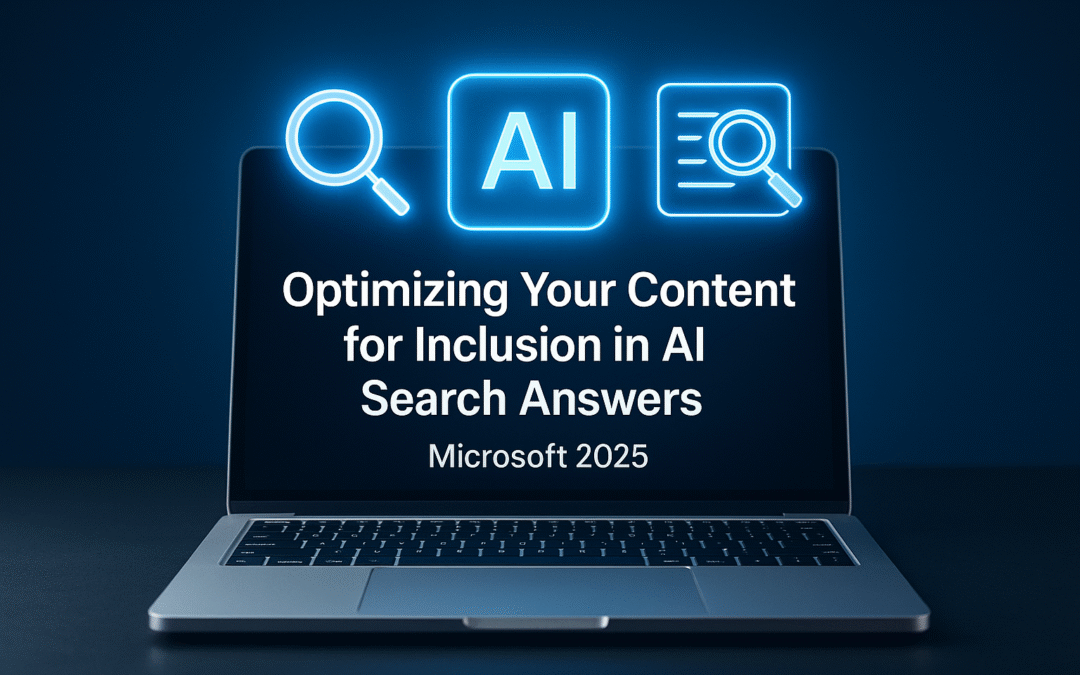The Big Picture
Search visibility isn’t just about showing up on Google anymore, it’s about getting noticed by AI. In 2025, Microsoft reported that AI referrals to top websites jumped more than 350% year-over-year, proving that AI-powered results are now a massive part of how people discover content.
So here’s the deal: ranking high isn’t enough. The real challenge is making sure AI actually selects your content for answers. Whether you’re dealing with Bing, Copilot, or whatever new assistant pops up next, your search visibility depends on how clear, structured, and easy-to-parse your writing is.
If you’re not sure how Google itself decides which snippets to show, check out Context Scoring Adjustments for Answer Passages: How Google Chooses Your Snippets. It breaks down how the algorithm weighs clarity and authority, basically the same stuff AI systems care about.
What You Should Be Doing
1. Make your title, meta description, and H1 tell the same story.
Keep them aligned and straightforward. If your title says “Best Dishwashers,” your H1 shouldn’t drift into “Quiet Home Appliances.” AI likes consistency, it builds trust.
2. Write simple, focused H2s and H3s.
Each heading should cover just one idea. They’re like road signs that help both readers and AI systems understand where each topic starts and ends.
3. Use Q&A sections.
Ask a question, then answer it clearly. These short, direct snippets are exactly what AI systems like to pull into their responses.
4. Use bullet lists and comparison tables.
They make your content easier to digest, and easier for AI to break down into usable chunks.
5. Add JSON-LD schema.
Schema markup helps AI understand what kind of page it’s looking at, whether it’s a product, review, or FAQ. It’s not glamorous, but it’s powerful for boosting search visibility.
For a full walkthrough on using schema with entity SEO, take a look at Semantic Triples and Schema for Local Service Pages, it explains how structured data actually builds context AI can trust.
What You Should Stop Doing
1. Ditch the walls of text.
Nobody wants to read a 500-word paragraph, and neither does AI.
2. Don’t hide info in tabs or dropdowns.
If readers have to click to see it, AI probably won’t.
3. Don’t rely on PDFs for key info.
They don’t carry the structured signals that HTML provides.
4. Don’t stick important text in images.
AI can’t always read it accurately. If it’s essential, write it out in HTML and include alt text.
5. Avoid vague language.
Words like “cutting-edge” or “innovative” mean nothing without numbers or proof. Be specific.
6. Keep punctuation clean.
Skip the fancy arrows or multiple exclamation points. Stick to periods and commas so AI doesn’t get confused.
Why It Matters
AI doesn’t read your site like a person, it breaks it apart into smaller sections, figures out which ones make sense, and then reassembles the best pieces into an answer. That’s why structure and clarity are the new kings of search visibility.
If your content is organized, clear, and confidently written, it has a much better shot at being chosen by AI systems.
The Takeaway
There’s no guaranteed formula for landing in AI-generated answers, but the rules for good search visibility are pretty clear:
- Keep SEO fundamentals solid… crawlability, metadata, and links still count.
- Structure your content with clean headings and schema markup.
- Write short, specific, and snippable content blocks that AI can reuse.
Search visibility today isn’t about luck—it’s about legibility. If both humans and machines can easily understand your message, you’ll rise naturally in AI results and traditional search alike.
If you want to go even deeper into practical keyword strategy, my piece on SEO Keyword Placement: The 4 Critical Spots That Actually Matter lays out exactly where to put your keywords so AI and humans both take notice.
👉 Read Microsoft’s full post here: Optimizing Your Content for Inclusion in AI Search Answers

